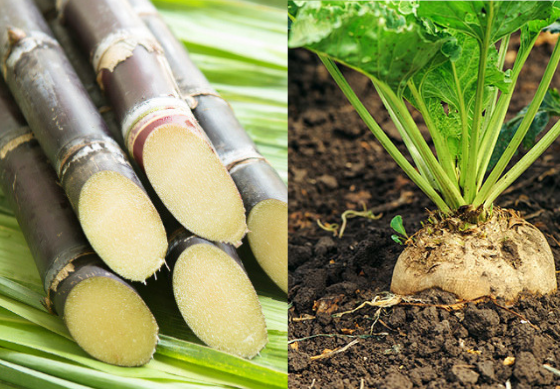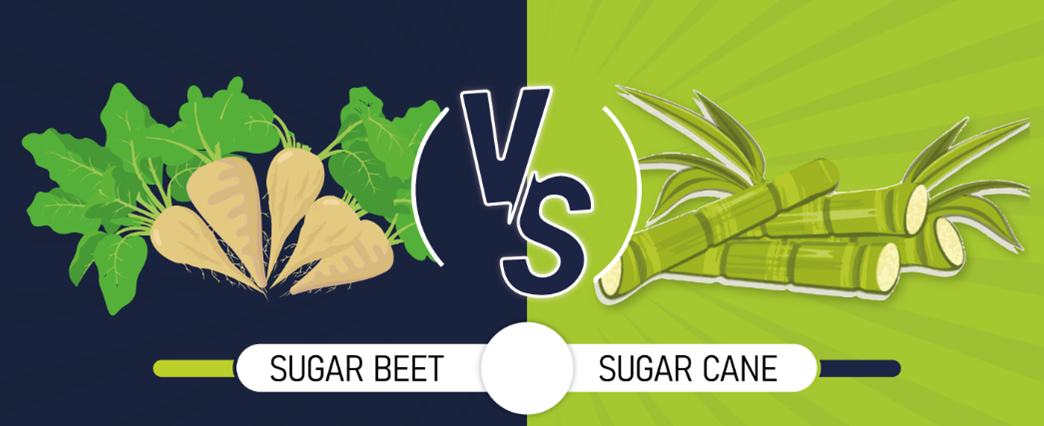Sugar beet vs sugar cane: Which is more suitable for sustainable energy production through biofuel?
Understanding Sugar Beet Vs Sugar Cane: Secret Distinctions and Their Value in the Global Sugar Market
The differences in between sugar beet and sugar cane are substantial in the context of the global sugar sector. Their differing climatic requirements influence where they can be cultivated, while their one-of-a-kind nutritional accounts impact customer choices. Furthermore, the economic implications of each crop shape market characteristics. Understanding these distinctions is crucial for grasping the broader effects on production and supply chains. What additional intricacies arise when considering their roles in the industry?
Climate and Geographic Versatility
Sugar beet and sugar cane display distinct climate and geographic versatility that affects their farming. Sugar beet grows in warm climates, calling for amazing weather for ideal development. It is mainly expanded in regions such as Europe and The United States And Canada, where problems favor its development during springtime and loss. In contrast, sugar cane flourishes in exotic and subtropical climates, demanding cozy temperatures and plentiful rains. This plant is chiefly cultivated in countries like Brazil, India, and Australia, where the atmosphere sustains its lengthy growth cycle.The varying adaptability of these crops influences not just their geographical distribution yet additionally the agricultural practices utilized by farmers. Sugar beet's durability to cooler temperature levels permits earlier growing, while sugar cane relies upon a longer growing season to attain optimal return. Understanding these weather choices is crucial for enhancing production and making certain food security in regions depending on these vital sugar sources.
Farming and Gathering Methods

Cultivating sugar beet and sugar cane involves unique strategies customized to every crop's details growth demands. Sugar beet is normally sown in cool, warm environments, requiring well-drained soil and precise spacing to enable optimal origin growth. Sugar beet vs sugar cane. Farmers often employ mechanical planters to assure uniform seed placement, complied with by routine irrigation and weed administration methods to support growth.In contrast, sugar cane flourishes in warmer climates and is generally propagated via stem cuttings instead of seeds. Planting happens in rows, permitting appropriate sunlight and airflow. Collecting sugar cane is labor-intensive, typically including hands-on cutting or making use of specialized equipment, depending on the scale of manufacturing. On the other hand, sugar beet harvesting utilizes mechanical harvesters that extract the roots from the soil, minimizing damage and assuring a cleaner product. Both plants demand careful management to make the most of yield and high quality, reflecting their importance in the worldwide sugar sector
Handling Approaches and Effectiveness
Processing methods for sugar beet and sugar cane expose key differences that influence effectiveness and yield. Sugar beets undertake a collection of steps, starting with slicing the origin right into thin cossettes, followed by extraction of juice via diffusion or pushing. This juice is then cleansed, focused, and crystallized, resulting in granulated sugar. The process typically takes concerning 5-10 hours from harvesting to crystallization.In contrast, sugar cane handling involves crushing the stalks to remove juice, which is after that heated and made clear. The juice undergoes evaporation and crystallization, typically taking longer than beet processing due to the fibrous nature of the cane. Additionally, sugar cane can be refined continuously, boosting efficiency.
Economic Impact and International Production Fads
The differences in processing approaches between sugar beet and sugar cane not just affect effectiveness yet likewise have considerable economic effects. Sugar cane dominates in exotic regions, using reduced production prices because of positive climatic conditions and reduced energy demands. On the other hand, sugar beet is largely grown in temperate areas, where higher manufacturing expenses are often incurred. This geographical variation influences worldwide supply chains, affecting prices frameworks and availability.Recent patterns suggest a changing worldwide demand for sugar, with both article source plants experiencing rate volatility. As countries aim for self-sufficiency, financial investments in regional sugar beet manufacturing have boosted, specifically in Europe and North America. Creating nations proceed to rely heavily on sugar cane, driven by export possibility. On the whole, the economic influence of these crops is profound, forming agricultural policies, profession agreements, and the sustainability of the worldwide sugar industry.
Nutritional Profiles and Health And Wellness Considerations
While both sugar beet and sugar cane offer as key resources of sucrose, their dietary profiles and health and wellness factors to consider differ significantly. Sugar cane, see this here often perceived as a much more natural sweetener, has trace quantities of vitamins and minerals, consisting of calcium and potassium, in addition to anti-oxidants. In contrast, sugar beet is mainly made up of sucrose with very little nutritional worth, yet it is rich in fiber and particular phytonutrients, which may offer digestion benefits.Health considerations bordering both sources concentrate on their high glycemic index and possible implications for obesity and diabetes mellitus. While both kinds of sugar add to calorie consumption, the processing methods can impact their health and wellness influence. Sugar beet normally undergoes comprehensive refining, while sugar cane may keep more of its natural substances in less processed kinds, such as raw cane sugar. Eventually, moderation is essential when incorporating either right into a well balanced diet plan.
Frequently Asked Inquiries

Which Regions Mainly Expand Sugar Beet Versus Sugar Cane?
Areas primarily growing sugar beet consist of Europe and The United States and Canada, while sugar cane grows in exotic and subtropical locations such as Brazil, India, and Southeast Asia. Environment and soil conditions greatly influence these agricultural patterns.
Exactly How Do Sugar Beet and Sugar Cane Differ in Taste?

What Prevail Byproducts of Sugar Beet and Sugar Cane?
Common spin-offs of sugar beet consist of molasses and pet feed, while sugar cane returns bagasse, molasses, and ethanol. Both crops contribute substantially to different markets, boosting sustainability and economic value beyond their primary sugar production.
Exactly How Do Environmental Elements Affect Sugar Beet and Sugar Cane Yields?

What Is the Historic Relevance of Sugar Beet and Sugar Cane Growing?
The historical relevance of sugar beet and sugar cane farming hinges on their functions in worldwide economies, farming methods, this article and trade. Both plants shaped social frameworks, affected colonial plans, and added to the development of modern-day industries.